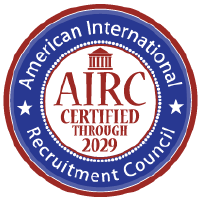
微信客服
wholerenguru3 (厚仁学术哥)
十几岁时进入大学,学生们往往对所期待的事情毫无准备。特别是国际学生,可能没有为大学生活做好充分的准备,他们作为大一就读的学校可能并不适合他们。我们与有各种考虑转学原因的学生进行了交谈:他们原来的学校可能不是他们的首选(事实上,也许这是他们唯一的选择),原学校可能没有提供他们喜欢的专业,学生可能误解了毕业的通识教育要求,或者原学校可能没有足够的声望。这些只是我们看到学生来找我们谈论他们的转学申请的几个原因。如果学生正在考虑转学,有许多事情需要牢记以使他们的转学(以及申请成功的可能性)更顺利。

转学分
转学时请务必牢记这一点:并非所有原学校的课程都会自动被目的学校接受。从原学校转到目的学校的学分越少,学生需要在目的学校学习的额外课程就越多,从而按时毕业。转学可能会推迟毕业日期,学生必须了解这一点。顶级学校通常优先考虑大二转学,事实上,许多学校只接受大二学生转学,因为他们希望学生更多的在本校接受教育。
推荐信
在申请转学时,学生需要推荐信,这些推荐信最好来自他们原学校的教师。在这一点上,高中推荐人的作用大大降低,因为他们无法谈论学生在大学水平上的表现。事实上,提交高中老师而不是大学教授的推荐信甚至会影响录取。因此,在每个学期,学生都应该确保他们有一个或两个较小的班级,教员会知道他们的名字。当然,在课堂上,学生应该积极主动地参与课堂讨论,但也要在上课时间表现出主动性,以便他们的教师可以有知识地写下他们。

课程作业
不同的学校,会安排不同的人来决定哪些课程可转。在某些情况下是招生,但在一些更精英的大学中,会由特定部门来决定。例如,在达特茅斯学院(常春藤大学之一),学生们到达校园并与各系主任会面并展示他们以前的课程材料后,才知道哪些课程会获得转学分。
考虑到这一点,最好在原学校修习更多的“通识”课程,因为这些课程更有可能转走。每所大学都会提供微观经济学,并且鉴于它是较低级别的课程,因此这门课程被接收学分的可能性很高。然而,考虑到主题的狭窄程度以及目的地学校提供类似课程的可能性,“80 年代初的动画”等小众课程可能不会轻易获得学分。同样,更高级别的专业课程可能不能转学分,因为一些院系更倾向学生修读他们学校的高级课程,以他们想要的方式进行培训。
保持记录
如果学生对潜在的转学感兴趣,那么在原学校好好规划是很有必要的。学生应该为在原学校学习的每门课程保留一份教学大纲的副本,并保留他们为每门课程提交的作业的副本。目的学校在评估转学分课程时,可能会要求查看此类材料,并且在学生在原学校学习每门课程时保持领先并保持井井有条,这样就不会在递交转学申请时抓狂。
总结
虽然许多顶尖学校转学生的录取率似乎低于新生录取,但本身转学的基数就比较少。 为转学申请过程做好充分准备意味着有条不紊,在原学校课程中表现出色,以展示处理和管理大学生活的能力。 凭借在大学生活的各个方面(从学术到课外活动再到课外活动)在大学水平上的成功记录以及能够证明学生智力能力的教师,学生将更有可能在转学申请中收到转学招生官的青睐。
英文原文:
Transferring colleges–what to keep in mind to maximize transfer credits
Many students may choose to apply to transfer after freshman or sophomore year for a variety of reasons–from how a school fits them, to wanting a major not offered at their current school, to ‘needing’ to be at a higher ranked university. If you are considering transferring in any way, make sure to keep some things in mind.
Entering college as a teenager, students are often unprepared for what to expect. In particular, international students may not be fully prepared for college life and the school they attend as a freshman just may not be ‘right’ for them. We have talked to students who have all had a variety of reasons for considering transferring: their home school (this article will refer the their current college as their home school) may not have been their first choice (in fact, maybe it was their only choice), the home school may not offer their preferred major, the student may have misunderstood what the general education requirements are for graduation, or the home school may not be prestigious enough. These are just a few of the reasons why we see students coming to us to talk about their transfer application. If a student is thinking about transferring, there are a number of things to keep in mind to make their transition (and likelihood of application success) smoother.
Transfer Credit
Make certain to keep this in mind when transferring: Not all courses taken at the home school will automatically be accepted for transfer at the destination school (the school the student hopes to transfer to). The fewer credits that transfer from a home school to a destination school, the more additional classes a student will need to take at the destination school in order to graduate on time. Transferring may defer a graduation date and it is imperative that students understand this. The top tier schools generally prioritize sophomore transfers and in fact, many will only accept sophomores for transfer given they want the majority of the students to be educated at their institution.
References
In applying to transfer, the student will need letters of recommendation and it is ideal to have these recommendation letters be from faculty at their current home school. High school recommenders at this point become significantly less useful because they cannot speak to the student’s ability to perform at the college level, and in fact, submitting letters from high school teachers and not from college faculty will be a bit concerning to admissions. Thus, in every semester, students should ensure they have one or two smaller classes where the faculty member will know them by name. Of course, in the classes students should be proactive and engaged in class discussion but also, show initiative in attending office hours so that their faculty can write about them knowledgeably.
Coursework
Schools will vary in who decides what courses can be transferred to a new (destination) institution–in some cases it is admissions but in some of the more elite universities, specific departments will decide what credits will be issued for courses taken at other institutions. For example, at Dartmouth College (one of the Ivies), students did not know what courses would be given transfer credit until after they had arrived on campus and met with various department Chairs to present their former course materials.
With this in mind, it is best to take more ‘general’ courses at the home school because they will be more likely to transfer — every college will offer Microeconomics and given it is a lower level course, there’s significantly less chance it would not be accepted for transfer credit. However, an obscure course such as “Animation though the early 80s” would likely not easily be issued credit given how narrow the topic is and the unlikelihood that the destination school offers a similar course. Similarly, higher level major courses may be less likely to transfer to a destination school since some major departments prefer students to take their upper level courses to train in the way they want to train students.
Record Keeping
If a student is interested in potentially transferring, it is important to be well organized at the home school. Students should keep a copy of their syllabi for every course taken at the home school, and also keep copies of the work they submitted for each course. A destination school, in evaluating a course for transfer credit, may ask to see such materials and by staying ahead and keeping well organized while the student is taking each course at the home school, there will not be a frantic search for these items post-transfer.
Summary
While the admission rate may seem lower for transfer students than freshman students at many of the top tier schools, the percentages do remain low. Being well prepared for the transfer application process means being organized, doing well in the home institution courses, and fully succeeding at the home institution to demonstrate an ability to handle and manage university life. With a demonstrated record of success at the college level in all aspects of university life — from academics to extracurricular activities to co-curricular activities — and faculty who can attest to the student’s intellectual capacity, students will be more likely to prepare an application that ‘catches the eye’ of the transfer admissions officer.
美国招生协会
AIRC权威认证
80位
美国双语导师
10年+
名校申请经验
8600+
名校名企录取

微信客服
wholerenguru3 (厚仁学术哥)

AIRC 权威认证

ICEF 权威认证

NCDA 权威认证





























